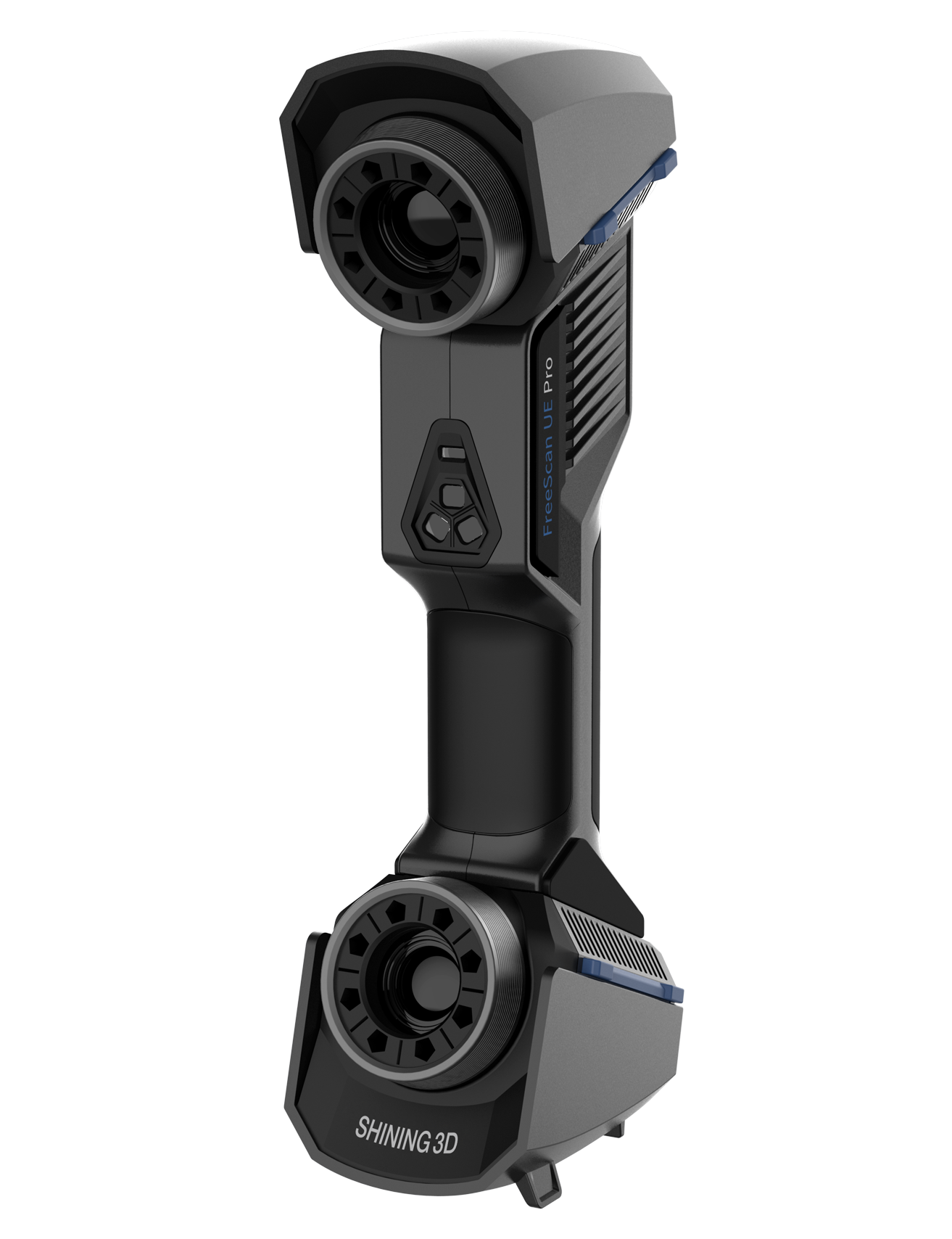Laser 3D scanning for industrial maintenance and repair with the UE Series

Introduction
3D scanners have a range of applications, in fields as diverse as surveying and healthcare, but one of the most important uses of 3D scanning technology — and laser scanning in particular — is industrial maintenance and repair.
Although 3D scanners can’t fix industrial parts and machinery by themselves, they can make maintenance and repair a great deal easier. They do this by allowing operators to carry out inspection, analysis, and reverse engineering: the process of precisely 3D scanning an existing part in a way that allows the part to be rebuilt, redesigned, or repaired. This process is crucial when a manufacturer does not have the original designs for a part, which can be the case if a part was built a long time ago or by another company.
This article looks at how handheld laser 3D scanners, particularly models like the FreeScan UE Series from Shining 3D, play a crucial role in industrial metrology, reverse engineering, and part maintenance.
| Accuracy | 0.02 mm |
| Volumetric accuracy | 0.02 mm + 0.015 mm/m |
| Acquisition speed | 1,850,000 points/s |
| Weight | 0.84 kg |
| Price | $ 24,000 |
The FreeScan UE Pro is a more powerful version of the FreeScan UE series. Shining 3D is a leading 3D scanner OEM based in China with offices in Germany.
Why reverse engineering is important
In general terms, reverse engineering is the process of extracting the design of a part by analyzing a physical version of it. Most of the time, parts are designed on paper or a computer and then made into physical objects; reverse engineering turns that workflow backwards.
Reverse engineering is highly valuable because it allows companies to understand how a physical part was made without having access to the original technical drawings. This is the case with legacy parts, for example, and with parts built by rival companies. Working out the design via reverse engineering enables the company to remake the part, repair it, make a variant of it, or make a new part that will work alongside it.
Industrial laser scanning can play a crucial role in reverse engineering because it allows operators to quickly and accurately obtain the dimensions of a part and create a digital 3D model of the physical object. Manually measuring the part would take significantly longer and be susceptible to human error.
You may also like:
What is reverse engineering?
Metrology-grade equipment for industrial scanning
Not every scanner is capable of metrology-grade industrial scanning. In order to repair or rebuild a critical-use part, engineers must be able to measure the part with a high level of accuracy and precision. A discrepancy of just a fraction of a millimeter could lead to poor interfacing between components or part failure.
Many structured light scanners are capable of metrology-grade scanning, but a more suitable technology for industrial use is laser scanning. Although slightly slower than structured light scanning, laser scanning offers superior single-scan accuracy and volumetric accuracy. The Shining 3D FreeScan UE, for example, has an impressive single-scan accuracy of 0.02 mm and a volumetric accuracy of 0.02 mm + 0.04 mm/m.

Using a device like the Freescan UE Series (UE7, UE11, or UE Pro with 14, 22, or 26 laser lines respectively) — engineers can capture the shape and dimensions of a part with a high level of accuracy, then use the scan data to create an accurate digital model of the part. Using the digital model, the engineers can design and assess the feasibility of repairs or additional components before carrying out the physical repairs and other tasks like surface maintenance.
Another viable option for industrial scanning is the Shining 3D EinScan HX, which combines structured light and laser scanning technology to offer both rapid scans and high-accuracy laser 3D scans. Engineers can use the structured light mode to take full-color scans (via the scanner’s RGB cameras) for visual purposes while using the laser function to obtain the most precise measurements for repairs.
You may also like:
Shining 3D EinScan HX review
Case study: Reliable marine maintenance
The viability of the FreeScan UE was recently demonstrated when a marine engineering company had to inspect and repair a large dock pump, a kind of centrifugal pump used to maintain the water level in graving docks and drydocks.
Two options available in such a situation were manual measurement and photogrammetry. However, manual measurement would have required a huge amount of time — and would still have posed a challenge in terms of creating a digital 3D model — while photogrammetry would have required lots of pieces of equipment and may not have delivered sufficiently accurate results. Structured light scanning would have been virtually impossible due to the outdoor sunny conditions in which the engineers had to operate.
Instead, the company used the Shining 3D FreeScan UE laser handheld scanner to 3D scan the large, curved object, requiring just 20 minutes of scanning time to capture its entire shape. A further hour was required to turn the scan mesh into a complete 3D model, which the engineers could then use to analyze the part and plan the most efficient means of its repair.
With the digital part now on file, it will also be possible for the dock owners to order a replacement of the part when it reaches the end of its lifespan — even if the original supplier no longer manufactures it.
More details about this case study in the video below:
Gallery
Shining 3D’s wide range of solutions
In addition to the FreeScan UE range, Shining 3D provides a broad range of 3D digitizing solutions, from multi-functional handheld devices like the EinScan HX to desktop scanners like the EinScan-SP. Other products in its metrology range include the FreeScan Trak for marker-free inspection and the RobotScan E0505 automated inspection system.
 English
English  Français
Français








